Focusing On Growth
Although Brunson Instrument Co.'s shop is in an underground cave, lean manufacturing unearthed production capacity that could be devoted to new products. A novel approach to accelerated product development helped the company focus on a growth strategy to get the most from this "lean-induced" opportunity. The local Manufacturing Extension Partnership center introduced the company to Eureka! Winning Ways, developed by Doug Hall.
Share



The people at Brunson Instrument Co. in Kansas City, Missouri, understand measurement. They are in the business of manufacturing high-precision alignment products and accessories for dimensional measurement. These products include targets for lasers, scanners and articulated probe arms. In fact, the company’s trademark slogan is "helping the world measure." The company also understands the importance of using measurements to control their own manufacturing processes and to make crucial business decisions.
This is one of the main reasons why Brunson has embraced lean manufacturing enthusiastically. The principles of lean manufacturing are largely based on measurements—verifiable, quantifiable measurements that take the guesswork out of progressively reducing waste in a manufacturing operation.
Moving to lean manufacturing has clearly had measurable results. For example, by creating a lean cell to produce the rigid stands onto which measuring instruments are mounted, the company reduced the quoted lead time on this product from between 8 and 12 weeks to 2 weeks (although orders usually ship in 1 week). Before creating this cell, the company frequently missed delivery dates despite the long lead time it gave customers. Now, 97 percent of deliveries are on time. In its lean configuration, the cell has doubled the rate at which it can ship finished stands.
Similar experiences in reorganizing other production processes revealed that the company had been missing out on a significant portion of its potential manufacturing capacity. As implementation of lean manufacturing "unclogged" its production processes, this capacity was now free for new products. The company could think about growth for a change.
"Before we adopted lean manufacturing, we were usually struggling to ship the orders we already had on the books," recalls Richard Powell, Brunson vice president and general manager. "At the time, it seemed pointless to try growing our business." After going lean, the company soon discovered "bonus" capacity that it could fill. Of course, Brunson engineers had no shortage of ideas for new products. The challenge was figuring out which ideas to act on first. "Just as lean manufacturing gives us numbers and measurements, we needed a process based on numbers and measurements to sort out the growth challenge," Mr. Powell says.
At this point, the company turned to Missouri Enterprise (www.missourienterprise.org), a non-profit consulting firm that provides "business optimization services." Missouri Enterprise is part of the network of Manufacturing Extension Partnerships (MEPs) organized by the National Institute of Standards and Technology (NIST). Missouri Enterprise had helped Brunson implement lean manufacturing, so it was natural to see what its advisors could to do to help the company find a solid growth strategy.
As it turned out, Missouri Enterprise had recently started offering a new program called "Eureka! Winning Ways." Eureka! Winning Ways was developed in 2006 by Doug Hall, a noted business advisor and author of Jump Start Your Business Brain. The U.S. Department of Commerce asked Mr. Hall to create this program so that MEPs could help small- to medium-sized companies learn to energize and streamline their business growth strategies. Mr. Hall’s program is based on many of the business concepts that he developed for his Eureka! Ranch, a place where business executives learn how to find new ideas and revitalize their companies.
Eureka! Winning Ways was exactly the numbers-and-measurements-based program that Brunson was looking for. "Eureka! Winning Ways gave us a methodical process for evaluating our ideas, measuring their potential and focusing our efforts on provable results," Mr. Powell says.
Following the Eureka! Winning Ways method, Brunson employees identified two new product ideas that best met the criteria established by this process. Six weeks after the first Eureka! session, the company started developing both ideas. Ten weeks later, pre-production prototypes were taken to a trade show, where customer reaction was very positive.
By late 2008, both products were being manufactured using capacity previously lost to non-value-adding activity but now redirected to making sellable product. Mr. Powell says that these two new products are expected to generate more than $300,000 in sales. "Just as we like the certainty over guesswork that lean manufacturing offers us, the Eureka! Winning Ways process helps assure us that we are on the right track when evaluating new ideas for product development. It’s a very fast track—we were surprised how quickly we’ve gained this new business," Mr. Powell says.
Manufacturing Goes Underground
Brunson Instrument has been growing as a manufacturer of instruments for large-scale 3D measurement and high-precision alignment products for more than 80 years. Perhaps the most remarkable development in this history was the company’s move into a hillside cave in 1960 (see box entitled "Shop In A Cave" on page 70). Although this may seem to be an unusual action for a manufacturing company, it is in keeping with the personality of the company founder, his philosophy about service to customers and the tradition of excellence that persists at Brunson Instrument to this day.
A. N. Brunson formed the company in 1927 as a repair shop in downtown Kansas City. His specialty was servicing surveyors’ transits and related instruments. An inventor and tinkerer, he soon developed his own line of optical instruments for measuring large objects to minute fractions of an inch. As business grew and the shop expanded in this downtown location, vibrations from local street traffic and fluctuations in temperature became an increasing problem for the precise machining and adjustment processes. Accustomed to seeking extraordinary solutions to challenging situations, Mr. Brunson discovered that local geological formations were nearly perfect for mining out a vibration-free, temperature-stable space for manufacturing.
It took 5 years to do the blasting and excavation needed to create this 220,000-square-foot underground facility, but the results proved to be an ideal setting for the production of high-precision instruments. The company has thrived in this environment ever since.
However, business climates and technological progress are not nearly as steady or stable as the atmosphere in a cave. When Deighton Brunson, the founder’s grandson, took over day-to-day management of the company in 1989, he faced the challenge of carving out a solid future for the firm despite seismic shifts in technology and a deeply embedded shop culture that resisted a transition to flexible, economical production and reliable on-time delivery.
"Twenty years ago, we had the best sales period in our history," the younger Mr. Brunson says. "Companies that built aircraft and large aerospace components relied on our optical tooling to measure these large structures. We were vertically integrated to supply a niche market by offering all the instrumentation and accessories needed to make highly accurate 3D measurements of large objects. Our products had a reputation for being sturdy, precisely made and well
engineered."
Unfortunately, the company also had a reputation for late deliveries, a situation that customers tolerated because their preference for Brunson-engineered products was strong. Despite the unconventional location underground, the shop was arranged along conventional lines, with separate departments for milling, turning, grinding, painting and more. About 90 people were employed there at the time. Typical orders included hundreds of products involving thousands of parts—a workflow nightmare.
Then, as Mr. Brunson describes it, "the tide went out." In the early 1990s, optical technology was being supplanted by digital equipment and electronic sensors. Sales dropped. "All of the weaknesses in our production systems and management practices were exposed," Mr. Brunson admits. "We needed a whole new culture."
Although not all of the initial efforts to overhaul the company’s processes and management practices were successful, Mr. Brunson learned that he didn’t need to know everything about every operation to manage well. Instead, he brought on board individuals who could help reorganize the shop. "I learned to listen to them and trust their judgment," Mr. Brunson says. One of the key appointments was that of Mr. Powell to the accounting department.
He had a fresh outlook on cost management and focused on streamlining operations and addressing production bottlenecks. He spent a lot of time on the shop floor. "What I saw was a workforce concentrating on efficient production but not on efficient throughput," Mr. Powell says. By chance, he encountered a recently retired production manager, Joe Henley, who had moved to the area. He brought along a strong background in the "theory of constraints," an approach to finding and removing barriers to workflow. Acting as a consultant, he provided many critical insights. For example, Mr. Henley and Mr. Powell worked with the shop staff to develop clear flow diagrams that revealed impediments to continuous part flow.
"We started moving machines around and reshaping the shop into product cells," Mr. Powell recalls. In 2006, these efforts led Brunson Instrument into a full move toward lean manufacturing. The company started working with Missouri Enterprise as facilitator and trainer. Although the shop was down to 45 employees, other important numbers started to improve markedly. Throughput and on-time delivery increased, work in process and stocked inventory decreased. Operating expenses declined and profitability rose, too.
A Growth Strategy That Measures Up
Of course, another benefit emerging from the move to lean manufacturing was discovering that the shopfloor resources formerly lost to wasted time and effort could be recaptured and directed to making new, sellable products. As Mr. Powell expresses it, "We had more capacity than we thought we had." Terry Siddens, one of the project managers from Missouri Enterprise who was working with Mr. Powell and his cell managers, recognized that Brunson Instrument might be a candidate for a pilot program applying the recently introduced Eureka! Winning Ways methodology. The timing was right, and Brunson Instrument certainly had an appreciation for decision-making based on measurements and science.
Mr. Hall was eager to see his Eureka! Winning Ways proven in a variety of manufacturing scenarios, so in February 2007, he elected to introduce the program at Brunson Instrument in person. He describes Eureka! Winning Ways as a simple, disciplined approach that indentifies and validates new product ideas. It uses scientific methods to find the "measurably smarter choices for growth" and outlines a plan to move ideas into production quickly. This plan includes an "early warning system" that detects indications that an idea isn’t likely to become a winner, and the company won’t be able to count on it.
For Brunson Instrument, the first step in Mr. Hall’s initial session was to generate a pool of possible new product ideas. The 14 staffers who participated in this session represented a cross section of the engineering, manufacturing and management teams. During this session, the staffers came up with 78 ideas. The group was then asked to evaluate each idea according to a set of criteria developed at the Eureka! Ranch. The scores from the evaluations narrowed the list to 12 with the most measurable potential. Another set of criteria further refined the list to the four that seemed worthy of pursuing.
The next step was forming four, three-person teams to investigate further each of the final four ideas. Each team was given 1 month to contact prospective customers to explore questions such as: Does this product idea add value? Will buyers believe in it? Does it have a "wow" factor?
At the end of the month, each team then presented its findings to the original group, a session monitored by a trained "growth coach" from Missouri Enterprise. One of the exercises in this process was to see how well the value offered by the new product could be captured in easy-to-understand statements. The group then voted on the ideas with the most apparent appeal to customers. The two ideas with the most votes were then submitted to the Eureka! Ranch for further analysis using the Merwyn Research system, which Mr. Halls says scientifically measures the ideas’ probability of success. This analysis gives each idea a green (go-ahead), yellow (cautionary) or red (stop now) signal.
In this case, both ideas got the green light. The first was for a low-thermal-expansion bar that can be used to calibrate measurement instruments in the field. The second idea was for target holders used with laser tracking devices. The holders would be certified, serialized and traceable to national standards.
The Eureka! Winning Ways process also gave Brunson an action plan to get these products into production by outlining some essential prototyping, testing and process-planning steps. This helped the shop avoid delays that might have delayed sales and deliveries.
Never Stop Digging
"The idea that we could start making money with these new products right away convinced us that establishing a growth strategy had been a missing link in our progress with lean manufacturing," Mr. Powell says. More importantly, everyone involved in the Eureka! Winning Ways process saw how important (and rewarding) it was to gain this momentum. "Just as lean manufacturing helps us measure our current performance and continuously set new targets for further improvements, our new growth strategy keeps us looking ahead for new products to fill our expanding pipeline," Mr. Powell explains.
However, not every idea is destined to strike gold. In the second round of idea evaluations, a collapsible 2.3 meter calibration bar was proposed. Although this product idea was a finalist in the evaluation process, it proved not to have the sales potential that warranted a go-ahead. The Eureka! Winning Ways process of systematic review and analysis revealed that the benefits of this product were limited and difficult to convey. According to Mr. Powell, not having to guess about possible hits or misses in the marketplace is the real power of this methodology.
Mr. Powell also stresses that both a lean manufacturing strategy and its parallel accelerated growth strategy must be self-sustaining—or nearly so. "Everyone in the organization has to be a part of these processes and share the commitment, but the real drive has to come from the top," he says.
Mr. Brunson definitely agrees. "I was determined not to be the killer third generation that might let this company down. Lean manufacturing and Eureka! Winning Ways are just two of the resources that have contributed to the transformation of this company," he says. "Right now, the real strength of the company is the people who work here—a flexible, committed group dedicated to serving customer needs."
In April, 2009, in a ceremony attended by Kansas City Mayor Mark Funkhauser, Mary Davis, president and CEO of Missouri Enterprise, presented Brunson Instrument with the "Missouri impact! Award," an award given annually by Missouri Enterprise in recognition of the company’s achievements in continuous improvement, manufacturing excellence and innovation. According to Mr. Brunson, the award was earned by the employees as a symbolic measure of what has been accomplished at this shop in a cave.
Related Content
Lessons From a Lean Shop
This custom ring manufacturer puts effort into Kaizen principles that help it to produce custom works of art at a high volume while spending minimal work on administrative duties.
Read MoreHow To (Better) Make a Micrometer
How does an inspection equipment manufacturer organize its factory floor? Join us as we explore the continuous improvement strategies and culture shifts The L.S. Starrett Company is implementing across the over 500,000 square feet of its Athol, Massachusetts, headquarters.
Read MoreRead Next
OEM Tour Video: Lean Manufacturing for Measurement and Metrology
How can a facility that requires manual work for some long-standing parts be made more efficient? Join us as we look inside The L. S. Starrett Company’s headquarters in Athol, Massachusetts, and see how this long-established OEM is updating its processes.
Read More

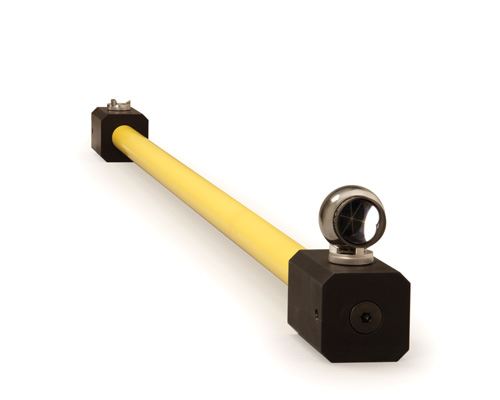
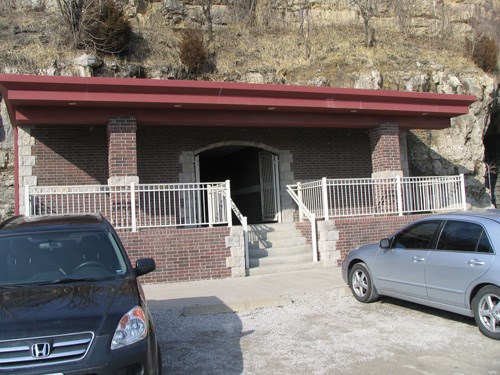
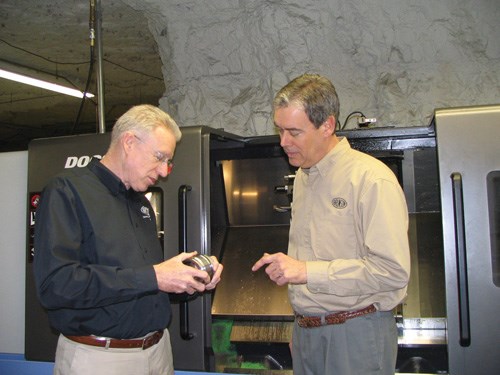
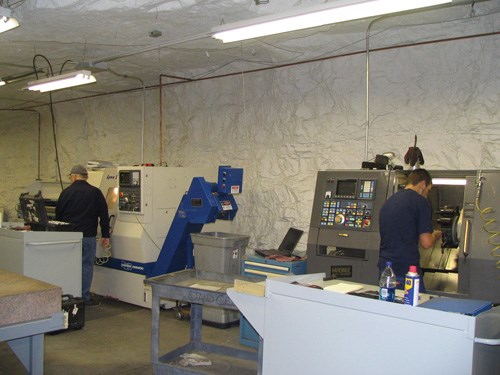

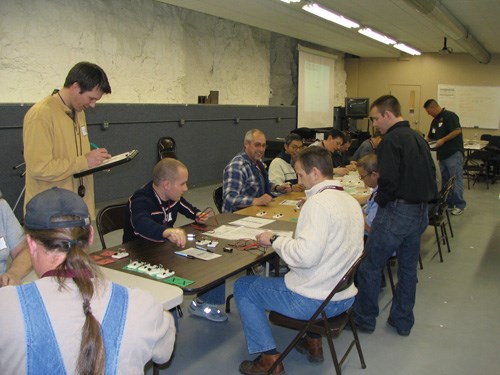















-02.jpg;maxWidth=300;quality=90)







